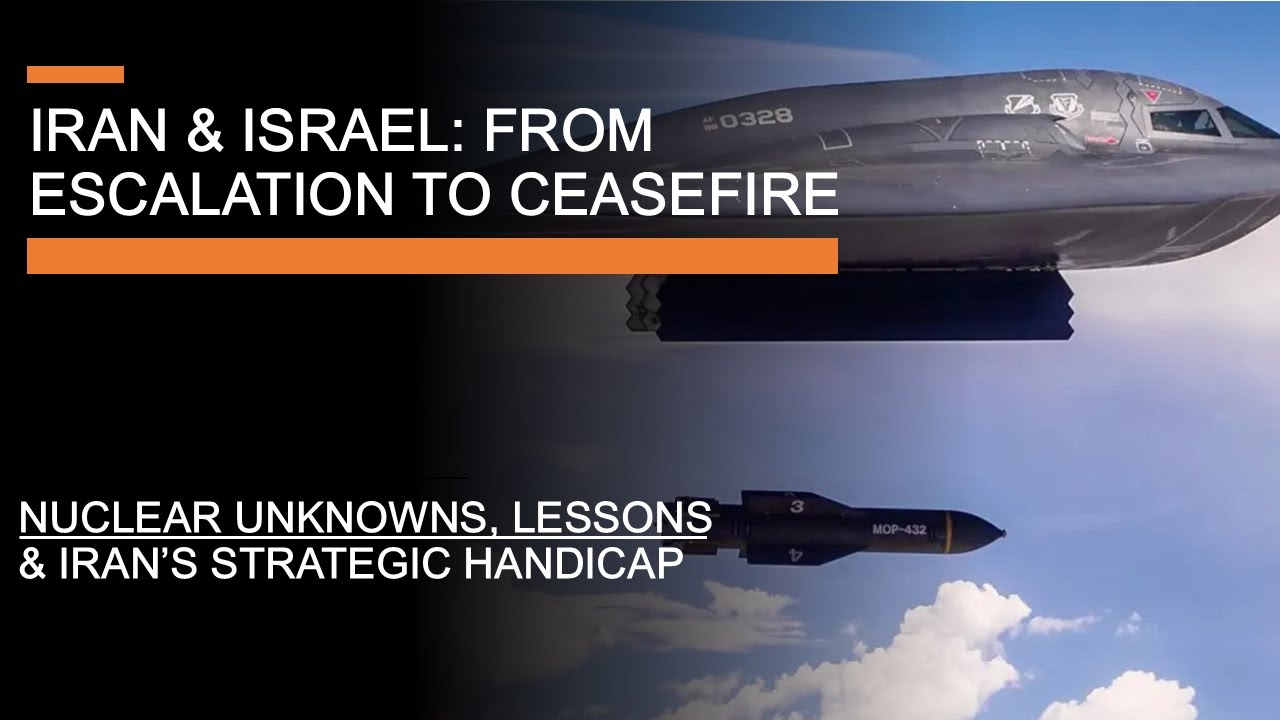The conflict between Iran and Israel in 2025 involved complex military and diplomatic maneuvers, highlighting the challenges of de-escalation, Iran’s limited nuclear capabilities post-strike, and Iran’s strategic vulnerabilities due to an imbalanced military focus. While temporary setbacks and targeted operations like the U.S. strike on Iran’s nuclear infrastructure occurred, lasting peace depends on more comprehensive, balanced strategies and ongoing negotiations.
The recent conflict between Israel and Iran demonstrates that, despite some modern quirks like strategic bomber attacks and social media diplomacy, war still shares many fundamental traits with historical conflicts—costly, destructive, and tragic. Unconventional tactics, such as Iran firing missiles at third countries and the U.S. responding with targeted strikes, led to a fragile pause in fighting. The conflict was ultimately de-escalated through a combination of military actions, diplomatic messaging, and unusual communications, with all sides claiming victory. This situation highlights the complex, often blurry line between war and peace in 2025, where responses are multifaceted and aimed at maintaining strategic balances without full resolutions.
The episode then shifts to a detailed account of America’s Operation Midnight Hammer, targeting Iran’s nuclear infrastructure with precision strikes after long-term planning. It reveals the extensive pre-operation intelligence process, especially the work of the Defense Threat Reduction Agency, which dedicated years to studying critical Iranian sites. The operation primarily targeted ventilation shafts with sophisticated bomb sequences, underscoring the advanced capabilities of U.S. strategic bombers like the B-2. Despite its success, the operation also underscored the aging and expensive nature of the B-2 fleet, hinting at the importance of the newer B-21 program that promises more cost-effective and larger-scale production for future strategic needs.
The analysis then addresses Iran’s response to the strikes, which involved firing missiles at U.S. forces in Qatar, mainly as a de-escalation tactic after the assassination of Iranian General Qassem Soleimani. Iran’s aim seemed to be showing strength without provoking full-scale conflict, targeting a country like Qatar that had limited offensive capabilities but strong air defenses, to avoid escalation. Meanwhile, the post-attack ceasefire involved diplomatic negotiations and public statements, with Iran signaling willingness to halt hostilities if Israel and others did the same. The episode emphasizes how modern conflicts often involve a mixture of military actions and diplomatic messaging, blurring the traditional categories of war and peace.
A significant focus is placed on the state of Iran’s nuclear program following the strikes. While most assessments suggest that key facilities were damaged, it is unlikely Iran lost all capabilities; instead, their breakout time—how quickly they could produce a nuclear weapon—has been extended temporarily. The discussion highlights the technical and strategic challenges of completely destroying a nuclear program through airstrikes alone, especially given Iran’s underground facilities and stockpiles of enriched uranium. The importance of negotiations, deterrence, and the potential for repeated attacks or covert activities remains central, as Iran still retains the capacity to advance its nuclear ambitions despite temporary setbacks.
Finally, the episode critiques Iran’s broader defense strategy, which heavily prioritized offensive missile and proxy forces at the expense of conventional military investments like air defense and modern fighters. This imbalance has left Iran militarily vulnerable and limited its ability to defend against Israeli or American operations. Russia’s role as a potential ally for Iran is examined, revealing a mismatch in strategic support—despite years of partnership and aid from Iran to Russia in Ukraine, Moscow has not reciprocated with significant military assistance. This hinders Iran’s credibility as a regional security partner and weakens its strategic position, while lessons are also suggested for Israel’s missile defense and military preparedness. The conflict’s overall outcome points to the limitations of Iran’s approach, emphasizing that lasting peace and effective deterrence require a more balanced and sustainable strategy.
